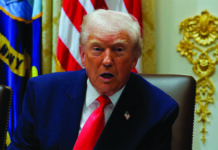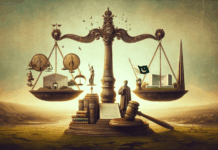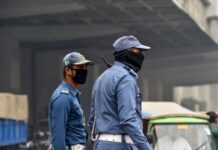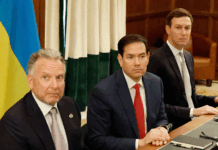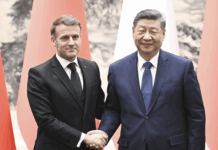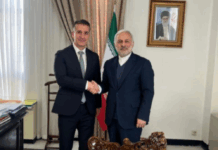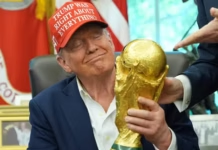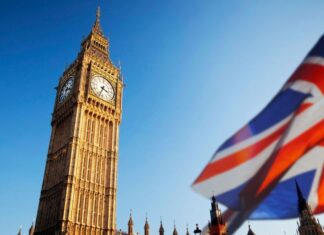Donald Trump’s resounding win in the US elections has frightened the world in a way never seen since the end of the Cold War. In numerous world capitols there is dread and anxiety. In a few cases, there is a sense of exultation too. At home, immigrants and even naturalized US citizens seem worried. In his previous term, Trump left deep divisions and inflicted grievous scars on US society. Racism spiked to unprecedented levels. Such is the fear that Australia’s ambassador to the USA rushed to delete his social media posts criticizing Trump.
Trump’s mercurial predisposition, his transactional approach, besides his aversion to a liberal world order, is viewed by analysts as his most worrisome personality trait. His loathing of constitutional and democratic norms, superficial knowledge of international security matters coupled with authoritarian bent, reminds one of the rise of Adolf Hitler in 1933. The two differ only in political creed, Lebensraum (living space) and America First, yet both share an identical state of mind.
Trump’s philosophy of uninhibited use of US power to upend the world and change the USA domestically will soon bump into ground realities. Mass deportations and use of the military for political purposes is bound to create unimaginable chaos at home. The world meanwhile sits on edge as do millions on the US soil
One need not cite how Hitler’s undisguised ambitions changed the course of world history. Hitler’s propaganda tsar Goebbels once remarked, “Give me resources and I will make the people believe the Devil is God”. Would it be farfetched to surmise that had Hitler not been on the global scene, there would have been no nuclear weapons on the planet? For Trump, climate change is a ‘big hoax’. The world worries if he will honour the Paris agreement this time around.
Regardless, the worldwide interest, fear and jubilation produced by Trump’s second win clearly lead to one simple conclusion: the USA is still the ‘most powerful actor in the international system’. This is true in the military, economic and technological sense of the term. China, a peer competitor of the USA, in several ways still lags behind.
But Trump will inherit a world different to what it was in his previous tenure. In theatres like Russia- Ukraine and Israel-Lebanon, belligerents show strategic exhaustion. Putin is not likely to be an easy diplomatic win-over by Trump especially, given his recent success on ground against Ukraine. His pre-negotiation condition that Ukraine will not join NATO at any cost may be unacceptable to Europe and to the US establishment.
Iran though quite weak had, before now placed its nuclear programme on a fast track after Trump pulled out from JCPOA in his previous term. The Houthis are vibrant with enough potential to imperil international shipping in the Red Sea. Both Hamas and Hezbollah are degraded but far from being demolished. In a most recent rocket barrage fired by Hezbollah from Lebanon, the major Israeli port city of Haifa came under attack. While some rockets were reportedly intercepted mid-air, the attack confirms Hezbollah’s resilience and enduring capacity.
Meanwhile, with the US power diluted in three theatres, China stands stronger in the western Pacific than at any other time since the onset of this century. But with a toxically hawkish anti-China nominee, Mark Rubio, as Trump’s Secretary of State, what should one make of the US naval chief’s recent memorandum asking the US navy to be ready for possible war in the Pacific in 2027?
In early September this year, Adm Lisa Franchetti, the Chief of Naval Operations US navy, released her seven-goal plan for war. She described her plan while addressing student officers at the US Naval War College, Newport, Rhode Island. The goals include, ‘streamlining maintenance for warships and submarines to eliminate delays, a bigger push to develop and field drones and unmanned vessels, and focusing on recruitment and ways to retain personnel’. According to the US naval chief, at the heart of her strategy is, ‘prioritizing raising the US navy level of readiness for potential conflict with China’s PLA navy in 2027’.
Year 2027 is projected by US analysts as the time by which China would be militarily strong enough and fully ready to invade Taiwan. The year will fall in Trump’s new watch in White House that begins in January 2025. He will have established himself firmly in office by then. And along with his team Trump would have advanced his agenda at home and abroad. Will Trump reinforce Admiral Franchetti’s plan and push more aggressively against China in the Pacific, or is he likely to backtrack under America First mantra?
There may be no easy answers but if Trump’s earlier performance as President and his choice of new team is any measure, China will be the topmost foe; India the foremost strategic ally and without question Israel the greatest beneficiary. For India however, the most difficult act would be managing a further push against China when asked by Trump. India’s economic stakes in Beijing are fairly high and it is yet to recover from its 2020 thrashing in Ladakh. History, old and recent, shows there are limits to military power. In the Middle East Trump’s previous Abraham accords are now in the dustbin of history. No Arab leader is currently in a position to do the US bidding for peace with Israel, unless the issue of Palestine is resolved.
In Australia, meanwhile, apprehensions are widespread about the continuity of AUKUS, a technological arrangement between Canberra, London and Washington aimed at equipping Australia with 8 Virgina-class nuclear attack submarines from Washington. Australia fears that under the America First refrain, Trump may annul the agreement on the pretext of arming firstly the US Navy, already short of such submarines.
Trump’s philosophy of uninhibited use of US power to upend the world and change the USA domestically will soon bump into ground realities. Mass deportations and use of the military for political purposes is bound to create unimaginable chaos at home. The world meanwhile sits on edge as do millions on the US soil.

